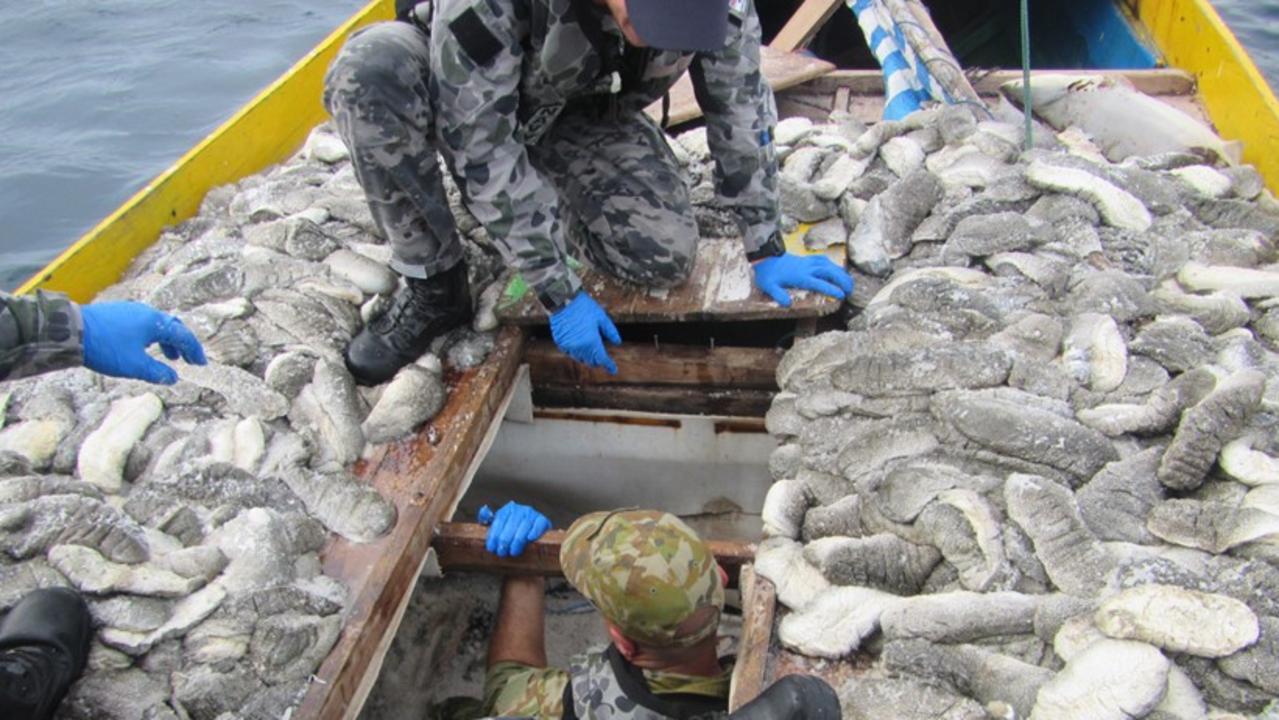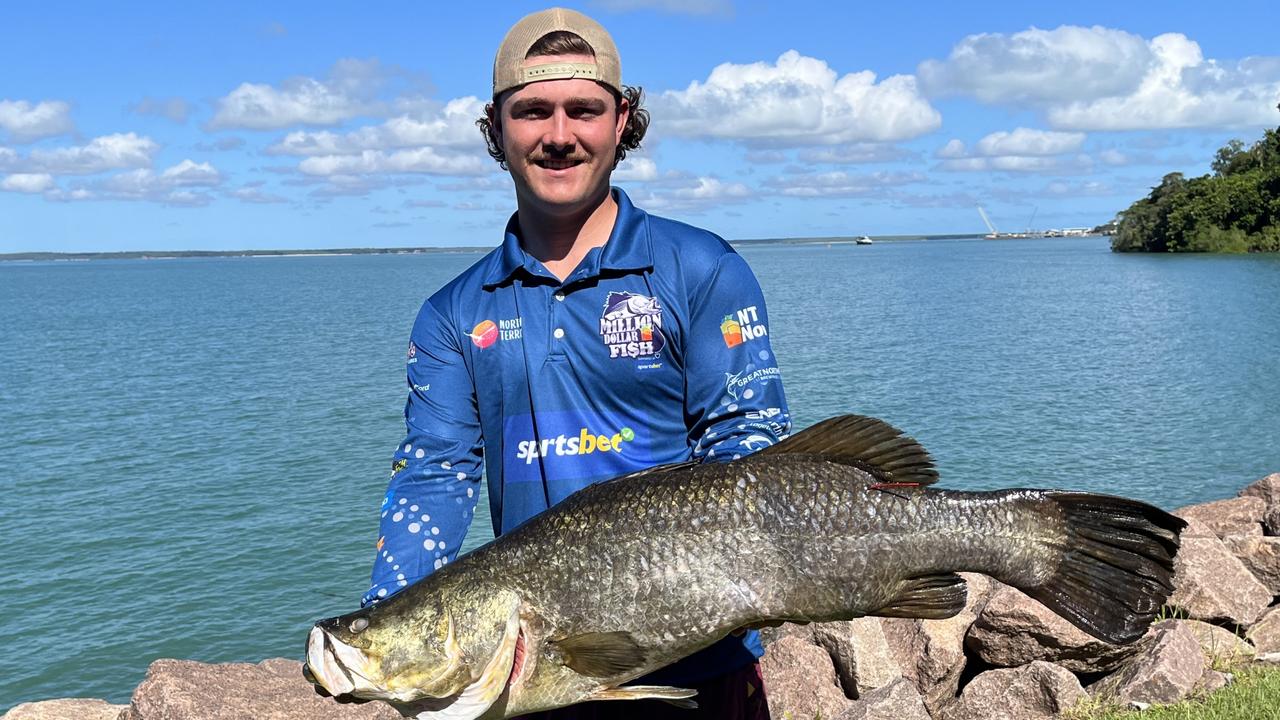Toxic weed must be culled before it reaches the Mary
THE iconic Four Mile Hole waterway has become infested with the dreaded Salvinia molesta.
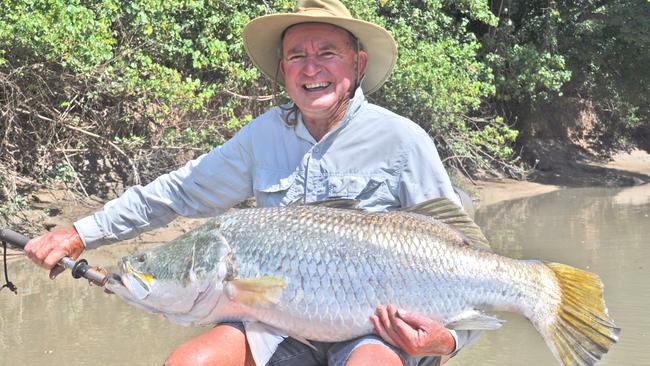
Fishing
Don't miss out on the headlines from Fishing. Followed categories will be added to My News.
One of the Top End’s most popular inland waterways is Four Mile Hole in Kakadu National Park.
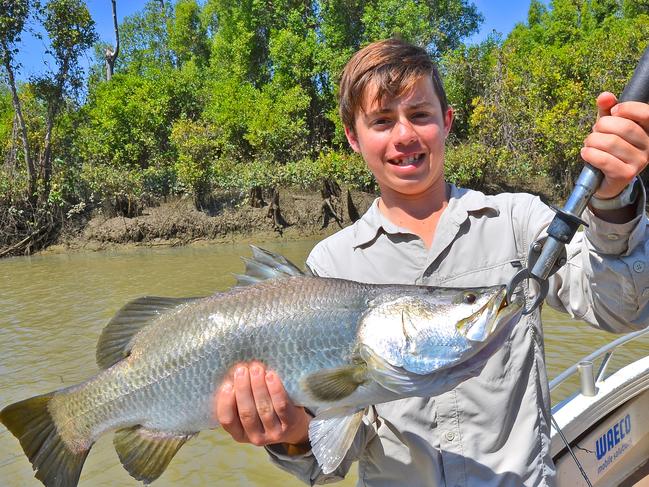
This picturesque lagoon, on the Wildman River system, opened the weekend before last and, as always, several different groups of anglers went in to test out its fishing quality this year.
Mostly there was optimism because Four Mile Hole often starts with a bang, with talented anglers catching upwards of 100 barra in a day.
Unfortunately this year, what they found was a very sad sight indeed: this iconic waterway has become infested with the dreaded Salvinia molesta.
Salvinia is a noxious floating fern that is native to south-eastern Brazil.
This free-floating plant does not attach to the soil but instead remains buoyant on the water surface.
In some cases, it can be so prolific that it covers a whole lagoon like a blanket, and not much can survive underneath.
I saw this a long time ago on a lagoon on the Magela flood plain in Kakadu.
I’m told the Salvinia at Four Mile Hole is mainly at the south end, in places right through the lilies and even displacing them, and you can see it well onto the shallow flood plain.
Four Mile is still fishable but in some places it prevents casting to pandanus and semi-submerged timber.
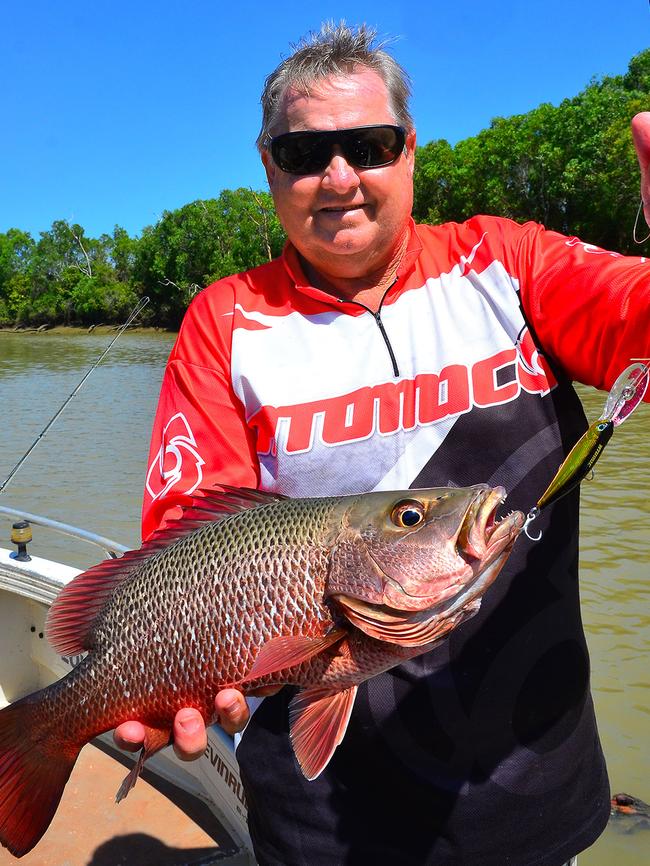
As elsewhere in the Top End, little barra are abundant throughout the infested lagoon, but bigger fish are largely absent – a problem at other lagoons that has been well documented in this column.
Sadly, the weed has most likely been introduced to Four Mile by fishermen inadvertently transporting it via boat trailers or landing nets. That would’ve happened last year or the year before, and no one noticed it until it really took off after the last wet season.
I understand Kakadu Park weeds and ferals team is aware of the infestation and has incorporated it into its control programs.
Hopefully, it can be controlled so that proper fishing can continue in the lagoon.
However, this infestation raises another major concern: with this noxious plant heading west, the next river system to be invaded can only be the Mary.
Salvinia in Four Mile Hole is a disaster; but if it gets into Corroboree, it will be a catastrophe of epic proportions in terms of the potential damage it can do to recreational fishing in the Top End.
Thousands of local and visiting anglers visit Corroboree each year, and it is the dry season lifeline for a huge Darwin-based, guided-fishing industry.
Then, of course, there are all the other waterways along the Mary: Mary River Bridge Lagoon, Hardies Lagoon, Alligator and Shady Camp freshwater.
If it does hit the Mary River system, it will have crossed the boundary from Kakadu responsibility to Northern Territory responsibility.
I believe our weeds management people in Government need to be resourced immediately to commence a public-relations campaign to make everyone aware of the requirement to not transport Salvinia from Kakadu to NT waterways.
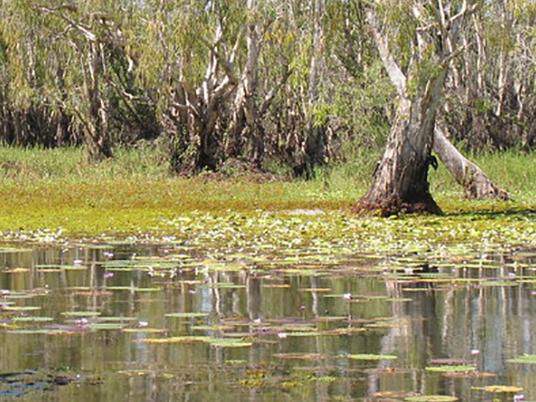
There should be signs along the Arnhem Highway and on the roads that lead to our waterways, advising people of the need to check their equipment.
In the meantime, we need Kakadu Park Management to throw more resources at eradicating this noxious plant in the national park.
Thanks to Salvinia, over the decades we have lost many valuable recreational fishing waterways, some steeped in tradition, and we need to reverse the trend and start getting these great fishing spots reopened. At the same time, we need to ensure that no more waterways get closed.
Perhaps a start might be to establish a joint NT/Kakadu task force on Salvinia eradication and prevention.
We are talking about a recreational fishing industry worth hundreds of millions of dollars to the NT, and a significant chunk of that is thanks to the Mary River system. Let’s get cracking to fix the Salvinia problem once and for all.
Surely the importance of recreational fishing to the lifestyle of Territorians, and as a major economic boost to NT tourism, warrants it.

